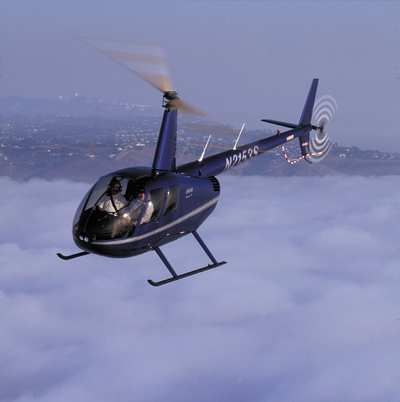Wed, Dec 18, 2013
Helicopter's Tail Rotor Was Struck By A Fueling Mat Left On The Aircraft
The NTSB has issued a probable cause report from an accident involving a Robinson R44 II helicopter that caused substantial damage to the aircraft. The pilot survived the accident, which occurred on February 6 this year.

According to the NTSB's factual report released in September, the pilot of the helicopter executed an autorotation landing after a fueling mat struck the tail rotor at the Tulsa International Airport (KTUL), Tulsa, Oklahoma. The commercial pilot was not injured. The tail rotor blades received substantial damage. The aircraft was registered to and operated by Crumpton Aviation LLC under the provisions of 14 Code of Federal Regulations Part 91 as a business flight. Night visual meteorological conditions prevailed for the flight and no flight plan was filed. The flight was originating at the time of the accident and was destined for Richard Lloyd Jones Jr. Airport (KRVS), Tulsa, Oklahoma.
After fuel servicing by fixed base operator personnel, the pilot lifted off from the ramp area and began a turn to the southwest. Climbing through 150 feet above ground level, the pilot reported a loud bang followed by loss of tail rotor effectiveness. The pilot executed an autorotation landing on a concrete ramp at the airport.
During examination of the accident site, two fractured tail rotor blades and a damaged fueling mat were found on a path between the initial liftoff point of the helicopter and its landing location. Examination of the tail rotor blades indicated that damage was consistent with contact by the fueling mat.
The board said in the probable cause report that after fuel servicing, the line technician did not remove the rubber fueling mat from the fuselage. The pilot did not observe the mat on the fuselage before taking off, most likely due to his inadequate preflight inspection of the helicopter. While climbing through 150 feet above ground level, the fueling mat departed the fuselage and impacted the tail rotor, which resulted in the fracture of both tail rotor blades and a loss of tail rotor control. The pilot executed an autorotation landing and landed without further incident.
The National Transportation Safety Board determines the probable cause(s) of this accident to be the line technician’s failure to remove the refueling mat from the helicopter fuselage following servicing, which resulted in the mat striking the tail rotor in flight, and the pilot’s inadequate preflight inspection.
(R44 image from file. Not accident aircraft)
More News
With Testing Soon Complete, Launch Preparations Begin in Earnest Sierra Space's Dream Chaser has been put through the wringer at NASA's Glenn Armstrong Test Facility in Ohio, but w>[...]
Takeoff Roll The process whereby an aircraft is aligned with the runway centerline and the aircraft is moving with the intent to take off. For helicopters, this pertains to the act>[...]
“We’re proud of the hard work that went into receiving this validation, and it will be a welcome relief to our customers in the European Union. We couldn’t be mor>[...]
"Aircraft Spruce is pleased to announce the acquisition of the parts distribution operations of Wag-Aero. Wag-Aero was founded in the 1960’s by Dick and Bobbie Wagner in the >[...]
IDENT Feature The special feature in the Air Traffic Control Radar Beacon System (ATCRBS) equipment. It is used to immediately distinguish one displayed beacon target from other be>[...]
 Sierra Space Repositions Dream Chaser for First Mission
Sierra Space Repositions Dream Chaser for First Mission ANN's Daily Aero-Term (05.10.24): Takeoff Roll
ANN's Daily Aero-Term (05.10.24): Takeoff Roll Aero-News: Quote of the Day (05.10.24)
Aero-News: Quote of the Day (05.10.24) Aero-News: Quote of the Day (05.11.24)
Aero-News: Quote of the Day (05.11.24) ANN's Daily Aero-Term (05.11.24): IDENT Feature
ANN's Daily Aero-Term (05.11.24): IDENT Feature



